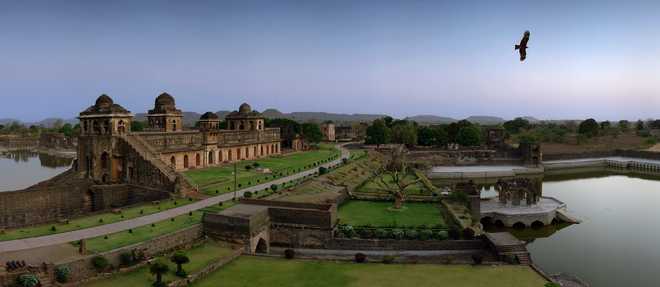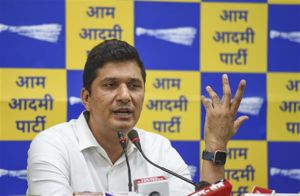
magic of mandu: The best time to visit Mandu in Madhya Pradesh, they say, is after the rains, when the Jahaz Mahal seems to float in the waters of the ocean. This is due to flooding of the two lakes — the Kapur Talao and the Munja Talao — between which it is built.
Neha Kirpal
A Shiva temple perched precariously atop two boulders at Hampi, a Victorian Gothic castle in Nainital, a tomb with fine jaali work… every monument in India is a lesson in history with some story attached to it — whether it’s myth, folklore or fact. Unfortunately, the local community doesn’t feel the connect with most of these monuments, resulting in them being abused, demolished or destroyed by the day. While the Archeological Survey of India (ASI) protects 3,650 monuments, 35,000 to 7,00,000 structures lie unprotected. Delhi alone has over 1,000 unguarded monuments. According to the ASI, there are 92 ‘missing monuments’ in the country.
It is primarily due to this reason that Delhi-based photographer Amit Pasricha (author of books such as The Monumental India Book, The Sacred India Book, Mughal Architecture & Gardens and India At Home) has begun photo documentation of lesser-known Indian monuments by means of an awareness-creating campaign. The ‘India Lost and Found’ campaign has already started across social media and will continue for the next two years.
Pasricha says given that today’s youth is disconnected from our heritage, they don’t understand its significance in modern India; there is an even lesser chance of them treating it like a living legacy. “Moreover, the way history is taught in our schools leaves no room to trigger the imagination about these civilisations gone by, save in the nature of Bollywood productions. The youth need information and stimulation in this area.”
The girth of the project was observed in small towns of the country and the first monuments that Pasricha set out to click were forts around Gwalior. “I realised that local people’s relationship with these structures was poor. No one really cared for them. To them, it was merely a pile of bricks to be vandalised. They would sometimes hang around them, pick up things from them or use them as toilets,” he says.
This got him thinking about a bottom-up approach. “If we send youngsters to travel to these places rather than the stereotypical Gokarnas and Kasauls, they might start thinking about what they are missing. This questioning would perhaps help them look at their own monuments differently, and this could be the start of a relationship change between them and their heritage,” he says. And the India Lost and Found Patron Network is propelled to do just that. Experts from art history, architecture, landscape design, conservation and storytelling participate and add value to the constant feed of images that India Lost and Found posts with their insight. The idea is to eventually gather these thoughts on a website that would be promoted among schoolchildren.
In addition, a series of workshops in schools that teach smartphone photography of lesser known monuments with 15-minute talks on its history is also underway. The Patron network thus far includes experts from various fields such as conservation architect Debashish Nayak, archaeologist K K Muhammed, interior designer Sunita Kohli, fashion designer JJ Valaya, American-Indian architect Christopher Beninger, writer and historian William Dalrymple and conservation architect Gurmeet Rai Sangha among others.
Writer and lecturer on Indian history and architecture, Dr Giles Tillotson, who is also part of the network, says, “Some of the photos show buildings in need of urgent attention. He lauds the intention to generate wider awareness and outreach about heritage structures through social media. “It could very well change a climate of opinion of them among the public,” he adds.
Similarly, fashion designers may speculate on the fabrics of the time, landscape experts on the quirks on Lodhi-era monuments within English gardens, the travel community on how to get there, how much time to give or where to stay. Eventually, this information will also be shared with networks such as Google Arts and Culture, Sahapedia and Archnet, Pasricha says.



























